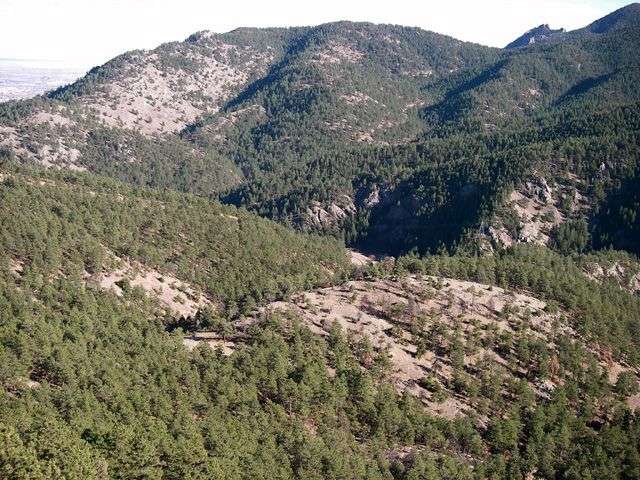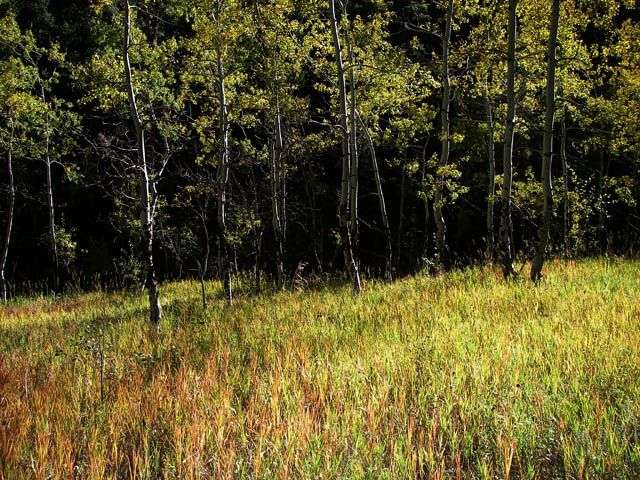How mountains hold carbon

Mountain forests are better at storing carbon – well, actually, they're better at everything – according to a new study by researchers at NSF-funded projects CyVerse, Jetstream, and the Boulder Creek Critical Zone Observatory.
Tyson Swetnam, an ecologist and science informatician at CyVerse headquarters at the University of Arizona, used CyVerse resources to conduct the GIS (geographical information system) and statistical analyses, and to share the data with his collaborators. The team used an open science strategy supported by CyVerse to make their data, analyses, and code for their calculations all freely available for researchers to reuse.
The study, which was partially supported by multiple National Science Foundation (NSF) grants including to Boulder Creek Critical Zone Observatory (CZO) and the National Center for Airborne Laser Mapping (NCALM) at the University of Houston, and by the Department of Energy's Terrestrial Ecosystem Science Program, is published in the open access science journal Ecosphere.
Trees are one of Earth's most important carbon reservoirs, absorbing carbon dioxide – a greenhouse gas – from the atmosphere as part of their process of respiration. Yet, in mountain landscapes, trees aren't lone agents at storing carbon. There's more going on; factors such as nutrient availability, soil depth, precipitation, and overland water flow, among other things, all impact the health of a forest and its ability to store carbon.
Swetnam and colleagues with the NSF CZOs study this bigger picture when thinking about how complex terrain influences the carbon cycle. The critical zone is defined as the zone from the tops of trees to the bottom of groundwater storage in crystalline bedrock that interact and are impacted by changes to climate and land use.
"Mountains first capture atmospheric moisture as it cools and condenses at altitude, and that rain and snow then provides catchments with moisture that eventually moves into valley bottoms," said Swetnam. Snowmelt from mountains feeds the rivers of the Colorado plateau, where the study was conducted.

"Concentrated areas of soil moisture lead to increased forest productivity, and greater biomass leads to more carbon sequestration," Swetnam continued. It turns out that mountains provide the special mixture for optimum forest carbon storage.
Variable topography is even more important in arid or moisture-stressed ecosystems, Swetnam said. "In the desert Southwest, if we didn't have mountains we wouldn't have forests. We need the complex terrain to create precipitation."
"We see this every summer in Tucson," he added, "when rain-clouds form over the Santa Catalina mountains during monsoon season."
The team analyzed precipitation records for three study sites in the Boulder Creek CZO in the Rocky Mountains near Boulder, Colorado, as well as LIDAR (light detection and ranging) data on tree density and height collected by an aircraft flown over the study sites as part of a NCALM initiative.
"Our study is the first to consider the variability of carbon compared with moisture distribution across elevation gradient," Swetnam said.
Conventional thinking would indicate that trees growing at higher elevations should do better, since there is more precipitation at altitude, but "when you look across an entire watershed, forest productivity in valley bottoms far outweighs that of ridges," Swetnam noted. Trees located in valleys, where soils are deep and moisture is collected from precipitation that flows down from surrounding summits, are more productive and better at storing carbon.

It is unknown how climate change will influence mountain forests, Swetnam said. "We anticipate that it's going to get hotter and drier, and forests will be in competition with each other for water. If trees die on upper slopes maybe more water will be available to trees below, but conversely, maybe the trees which are acclimated to having constant water will die earlier when their water resources are reduced."
Regardless, he said, it's important that land use decision makers who are considering which timber stands to treat or preserve, consider that topography influences forests' robustness, productivity, and ability to store carbon.
Swetnam and his collaborators used the CyVerse Data Store and the NSF's Jetstream Cloud hosted by the Extreme Science and Engineering Discovery Environment to share their data and calculations as they completed the study.
"The availability of CyVerse and Jetstream computational resources makes GIS computations faster and easier," Swetnam noted.
The data are available for download from the CyVerse Data Store and Critical Zone Observatories data repository. Code for the calculations is available in the paper's supplemental sections.
More information: Tyson L. Swetnam et al. Topographically driven differences in energy and water constrain climatic control on forest carbon sequestration, Ecosphere (2017). DOI: 10.1002/ecs2.1797
Journal information: Ecosphere
Provided by University of Arizona




















